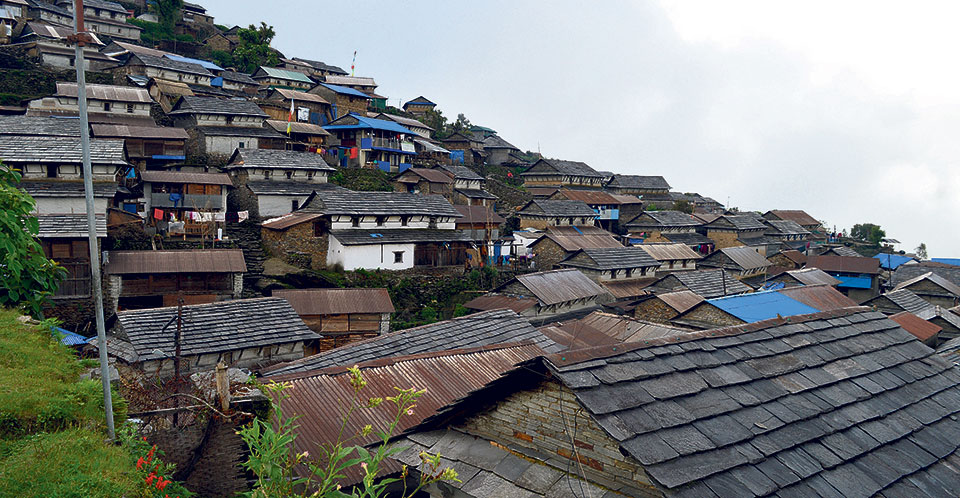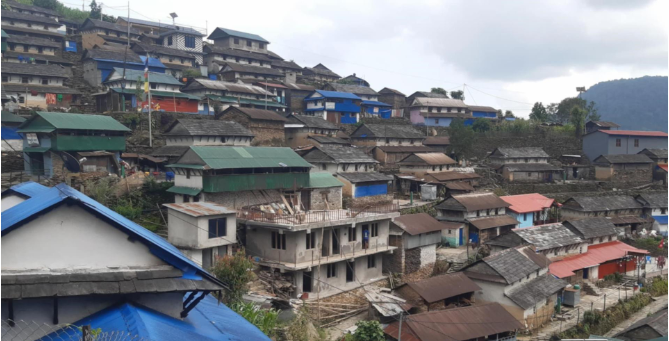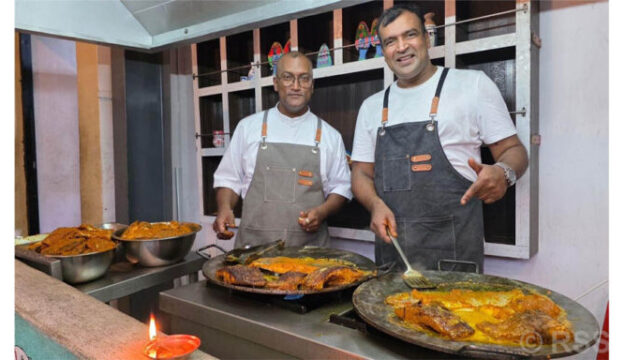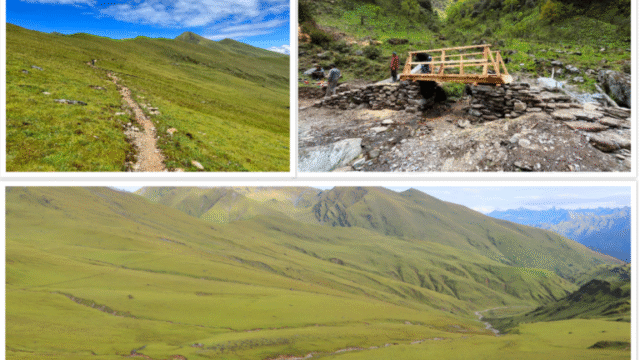Stone-Paved Alleys, Zinc-Roofed Houses, and Timeless Gurung Traditions
Nestled at an altitude of approximately 1,600 meters above sea level, Bhujung, Ward No. 4 of Kwholasothar Rural Municipality in Lamjung, stands as a vibrant testament to the indigenous Gurung lifestyle. The village’s closely packed houses with stone walls and zinc roofs, along with its cobblestone alleys and traditional architecture, make Bhujung appear like a living museum of ancient Gurung civilization.
According to Ram Chandra Gurung, former chairperson of Bhujung Samaj and a homestay operator, the architectural uniqueness and cultural authenticity attract every visitor. “The old-style rotating houses and preserved customs charm all who arrive,” he noted.

Largest Gurung Settlement in Lamjung with Flourishing Homestay Tourism
Bhujung is the largest and uppermost settlement in Lamjung. Enveloped by lush forests, alpine meadows, and with views of Lamjung and Annapurna Himal, the village boasts about 500 households. Out of these, 33 households are currently operating homestays, a tourism initiative started back in 2006 (2063 BS).
According to Tul Bahadur Gurung, chairperson of Bhujung Community Homestay, around 50 to 60 tourists visit the village daily. Tourists are treated to authentic Gurung hospitality and cuisine, including millet dhido, nettle soup, fermented greens (gundruk), fiddlehead ferns (niuro), wild asparagus (kurilo), taro, millet liquor, and meat dishes like chicken and goat. Locals affectionately call Bhujung the “Hidden Village” due to its serene beauty and secluded charm.
Cultural Richness: 90% Gurung Population and Preserved Heritage
With nearly 90% of its population from the Gurung community, Bhujung serves as an important cultural hub. The village has become a focal point for observing traditional Gurung customs, dress, language, and rituals. The local community is committed to preserving and promoting its heritage, aiming to develop Bhujung as a prominent cultural and eco-tourism destination.
Landmarks like the ancient monastery (gumba), tea gardens, and Santaneshwor Mahadev Temple are being promoted as tourist attractions. Locals believe that couples who worship at the Santaneshwor Mahadev Temple are blessed with children, adding a spiritual allure to the destination.
Bhujung Festival and Conservation-Based Tourism Development
The first Bhujung Festival was held in 2007 (2064 BS), marking the beginning of tourism promotion in the village. Since then, several promotional events have been organized. The Annapurna Conservation Area Project (ACAP), through its regional conservation office, played a vital role in initiating homestay tourism, supporting both financially and technically. What started with just 15 homestay houses has now grown to 33, significantly contributing to local livelihoods and sustainable tourism growth.
Gurung Heritage Trail: Connecting Villages Through Trekking
Bhujung is now included in the Gurung Heritage Trail, an ambitious project aimed at connecting several Gurung villages across Kaski and Lamjung districts. This initiative is led by Bobar Jung Gurung, founding president of the Gurung Tourism Entrepreneurs Association of Gandaki Province and coordinator of the Gurung Heritage Trail Program.
“The trail traces the ancient salt trading route, connecting sheep pastures and alpine meadows through villages like Bhujung, Dudh Pokhari, and Gurung Deurali,” he explained. “It aims to link remote communities through trekking, ultimately increasing their income opportunities.”

Exploration to Dudh Pokhari and Trail Preservation Initiatives
Recently, an exploratory trek was organized from Bhujung through Singdi, Pasgaun, and Ghanpokhara, reaching up to Dudh Pokhari, a sacred destination located at 4,600 meters. The initiative was led by the Gurung Tourism Entrepreneurs Association with support from Nepal Tourism Board, Kwholasothar Rural Municipality, and Marsyangdi Rural Municipality.
According to the Association’s president Kismakumari Gurung, haphazard trail construction has led to the degradation of traditional trekking routes. “That’s why we are focusing on developing the Gurung Heritage Trail as a sustainable alternative for trekking tourism,” she said.
A Hidden Gem Awaiting Global Recognition
Bhujung, with its cultural depth, scenic charm, and community-driven tourism, is gradually carving out its place on Nepal’s tourism map. As more travelers seek authentic and eco-friendly experiences, Bhujung stands ready to offer the warmth of Gurung hospitality, the serenity of Himalayan landscapes, and the legacy of an ancient culture preserved with pride.






